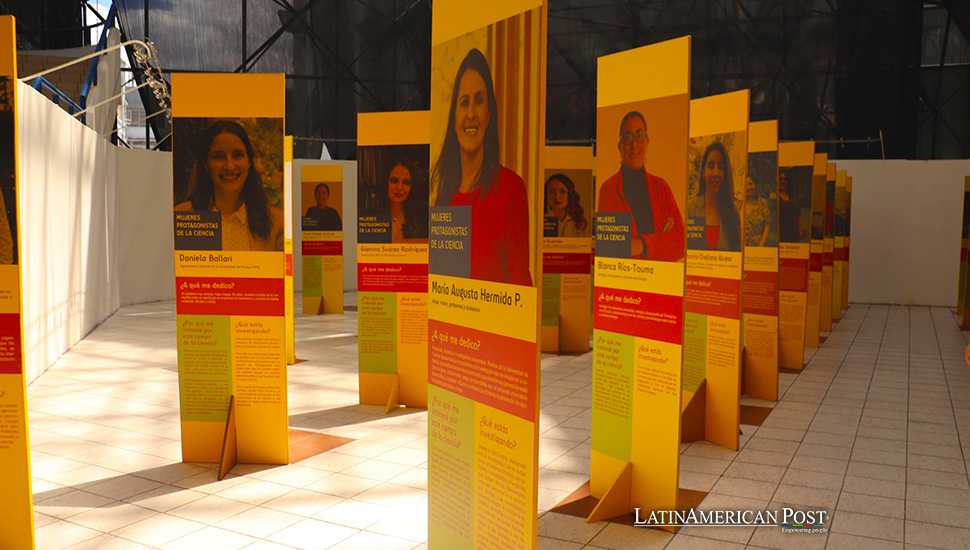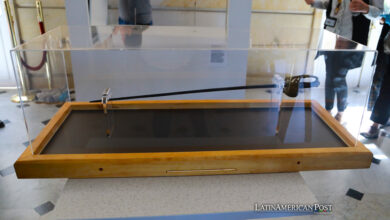Ecuador’s Women in Science Celebrated Through a Traveling Exhibition Celebrating Their Groundbreaking Contributions

A traveling exhibition, “Women Leading Science,” at the Pontifical Catholic University of Ecuador, highlights the pivotal role of Ecuadorian women in science, showcasing their work and achievements to inspire future generations.
Unveiling Women’s Scientific Impact in Ecuador
In the heart of Quito, at the Pontifical Catholic University of Ecuador (PUCE), a groundbreaking exhibition is making waves, shedding light on women’s vital contributions to Ecuadorian science and beyond. “Women Leading Science” is not just an exhibition; it’s a movement aiming to rewrite the narrative around women’s roles in the scientific realm. As the exhibition tours various cities across Ecuador, its impact grows, bringing to the forefront the stories of women who have not only contributed to the advancement of science but have also paved the way for future generations to follow in their footsteps.
The exhibition, which runs until March 15, is a testament to Ecuadorian women scientists’ perseverance, intellect, and innovation. Organized by the Ecuadorian Network of Women Scientists (Remci), with support from the Organization of Ibero-American States (OEI) and the City Museum Foundation through the Interactive Science Museum (MIC), the initiative began in 2021. It has since gathered the profiles and testimonies of 46 Ecuadorian researchers whose work demonstrates that Ecuador is a country of scientific innovation and discovery.
The stories of these women, now numbering around 100, are not just personal achievements but milestones in the scientific community. They challenge the traditional perceptions of science in Ecuador, proving that women are not just participants but leaders in their fields. This initiative has successfully attracted attention, with the MIC hosting the exhibition in 2022 and drawing in 20,000 visitors, highlighting the public’s growing interest in the contributions of women to science.
Despite the progress showcased by the exhibition, the struggle for gender parity in science is ongoing. The “State of Science 2023” report, recently published by the OEI, reveals a stark reality: in most Ibero-American countries, women researchers constitute less than 50% of the scientific workforce. Chile, Mexico, and Peru are noted for their deficient representation of women in research roles. However, there are glimmers of hope, as countries like Cuba, Argentina, Paraguay, and Uruguay are making significant strides toward gender parity in the scientific community.
Testament to Perseverance and Innovation
The exhibition serves not only as a celebration of the achievements of Ecuadorian women scientists but also as a call to action. It aims to make visible these women’s invaluable work and inspire more women and girls to pursue careers in academia, research, and public decision-making spaces. Doing so supports the broader goal of achieving gender equality in science, ensuring that women’s contributions are recognized and valued.
The support from the Organization of Ibero-American States for Education, Science, and Culture (OEI) has been instrumental in this endeavor. Established in 1949, the OEI is the premier intergovernmental organization for South-South cooperation in the Ibero-American space, encompassing 23 member states and operating 19 national offices, with its General Secretariat in Madrid. Under the motto “We make cooperation happen,” the OEI has been pivotal in promoting educational, scientific, and cultural collaboration across the region.
This traveling exhibition is more than a display of achievements; it’s a beacon of inspiration, challenging societal norms and encouraging a new generation of women to break through the glass ceiling in science. The showcased work of Ecuadorian women scientists highlights their contributions to contemporary research and signals a shift towards a more inclusive and equitable scientific community in Ecuador and beyond.
Educating and Motivating Through “Women Leading Science”
By bringing these stories to the public, “Women Leading Science” plays a crucial role in educating and motivating young women and society about the importance of diversity and inclusivity in the scientific field. It serves as a reminder of the obstacles women have overcome and their strides in science. It offers a powerful message of hope, determination, and the endless possibilities that lie ahead for women in science.
Also read: Which Actions Will Provide Opportunities for Women in Science and Technology?
As the exhibition continues to tour Ecuador, its message resonates far beyond the walls of the PUCE or the confines of the science community. It is a call to recognize and celebrate women’s achievements in science, support their journey, and ensure that a diverse and inclusive array of voices shapes the future of science. “Women Leading Science” is not just a reflection of where we are today but a vision of what we can achieve tomorrow when we embrace the contributions of all individuals, regardless of gender, in the pursuit of knowledge and innovation.





